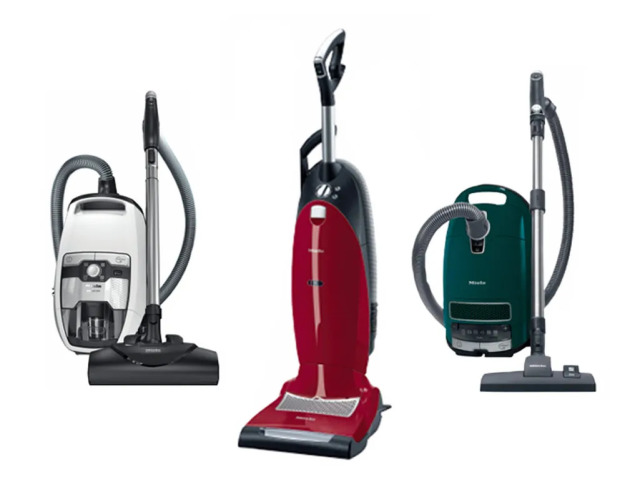A vacuum cleaner, also known simply as a vacuum or a hoover, is a device that causes suction in order to remove debris from floors, upholstery, draperies and other surfaces. It is generally electrically driven.
The debris is collected by either a dustbag or a cyclone for later disposal. Vacuum cleaners, which are used in homes as well as in industry, exist in a variety of sizes and models—small battery-powered hand-held devices, wheeled canister models for home use, domestic central vacuum cleaners, huge stationary industrial appliances that can handle several hundred litres of dust before being emptied, and self-propelled vacuum trucks for recovery of large spills or removal of contaminated soil. Specialized shop vacuums can be used to suck up both dust and liquids.
In 1860 a manual vacuum cleaner was invented by Daniel Hess of West Union, Iowa. Called a 'carpet sweeper', It gathered dust with a rotating brush and had a bellows for generating suction. Another early model (1869) was the "Whirlwind", invented in Chicago in 1868 by Ives W. McGaffey. The bulky device worked with a belt driven fan cranked by hand that made it awkward to operate, although it was commercially marketed with mixed success. A similar model was constructed by Melville R. Bissell of Grand Rapids, Michigan in 1876, who also manufactured carpet sweepers. The company later added portable
vacuum cleaners to its line of cleaning tools.
In 1901 powered vacuum cleaners using suction were invented independently by British engineer Hubert Cecil Booth and American inventor David T. Kenney. Booth also may have coined the word "vacuum cleaner". Booth's horse drawn combustion engine powered "Puffing Billy", maybe derived from Thurman's blown air design," relied upon just suction with air pumped through a cloth filter and was offered as part of his cleaning services. Kenney's was a stationary 4,000 lb. steam engine powered system with pipes and hoses reaching into all parts of the building.

